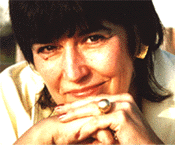Boston’s Jewish tailors started the apparel industry at the turn of the 20th century by creating production patterns, teaching apprentices, setting up manufacturing shops, and copying creative designs. By mid-century dressmakers in New York and Boston fashion schools began producing creative designers. From the different learning backgrounds, a “wall” arose between creative design rooms and efficient manufacturing and pattern designers – with high costs from poor design management. As manufacturing went offshore in the 1980s, retailers began their own product development, adding CAD systems – and sameness took over.
Young designers who dream of creating “a collection” have presently no path, nor the knowledge, to materialize quality design ideas that can be produced efficiently to make an income. If they could find a pattern maker and a contract shop, the costs would be prohibitive. Boston Design Lab (BDL) evolved to creatively solve these problems through the Stylometrics system (developed in National Science Foundation grants), and by innovating business structures. DEs must be willing to collaborate, working together to create these new systems in Boston. The aim is to eliminate many middling costs from designer to consumer, without losing quality and uniqueness, and to set up IT (Information Technologies) to solve product lifecycle problems at POD (Point of design).
Pattern Templates are part of the Stylometrics system, upon which DEs develop creative design ideas (by draping or flat work), to result in a pattern that is ready for efficient production. Sameness in product and processes give speed, efficiency and low-cost in production. The Templates are a foundation of sameness for creative 2-D art or 3-D fashion sculpture, and works to eliminate many costly repetitions
Some innovative business structures in BDL are:
“Boutique Production”; a
“Timeshare Factory”; training fashion consultants to work with DEs for selling direct to consumers in trunk shows, expos, etc.; software, such as “Self AWear™” for collecting consumer preferences in databases; critiques for saleability to myriad market demographics; linking with a sewing professionals association, for making custom or small lots.


